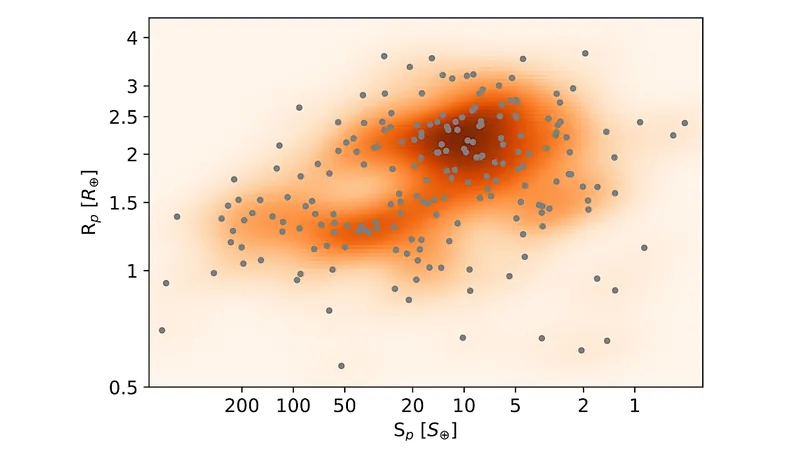
Unveiling the Mysteries of Exoplanets: The Radius Gap Phenomenon
2025-09-03
Author: Nur
In a groundbreaking analysis involving 218 exoplanets orbiting 161 M dwarf stars, researchers have revealed intriguing insights into planetary radii. By utilizing high-resolution near-infrared spectra from the APOGEE project, a stellar radius calibration was derived to enhance the understanding of these intriguing celestial bodies.
Discovering the Radius Gap
The study unveiled a fascinating radius distribution exhibiting a significant gap between approximately 1.6 to 2.0 times that of Earth. This gap is flanked by two notable peaks: one for super-Earths (about 1.2 to 1.6 R⊕) and another for sub-Neptunes (2.0 to 2.4 R⊕). Remarkably, the radius gap remains consistent across a range of exoplanetary orbital periods, contrary to earlier findings associated with FGK dwarf stars.
Link to Planetary Formation Models
The consistent nature of this gap aligns well with pebble accretion models that consider factors like photoevaporation and inward migration. When it comes to insolation levels, the radius gap maintains its shape across a spectrum of stellar irradiances (around 20-250 S⊕). A notable feature is the emergence of a sub-Neptune desert when the orbital period is less than 2 days, further emphasizing that the characteristics of these exoplanets are inherently influenced by their host stars' masses.
Diving Deeper into Densities
By merging previously published mass data for 51 exoplanets with the newly calculated radii, researchers were able to elucidate density patterns among these distant worlds. A distinct gap at 0.9 times Earth’s density emerged, effectively distinguishing rocky exoplanets from their sub-Neptune cousins. Within the sub-Neptune group, two density peaks were identified, indicating varying compositions. The lower density category likely represents gas-rich sub-Neptunes, while the higher-density subset is suspected to belong to volatile-rich water worlds.
Implications for Future Research
This analysis not only sheds light on the radius gap phenomenon but also opens avenues for further investigation into the formation and evolution of exoplanets around M dwarf stars. Such exploration could reshape our understanding of planetary diversity across different stellar environments.



 Brasil (PT)
Brasil (PT)
 Canada (EN)
Canada (EN)
 Chile (ES)
Chile (ES)
 Česko (CS)
Česko (CS)
 대한민국 (KO)
대한민국 (KO)
 España (ES)
España (ES)
 France (FR)
France (FR)
 Hong Kong (EN)
Hong Kong (EN)
 Italia (IT)
Italia (IT)
 日本 (JA)
日本 (JA)
 Magyarország (HU)
Magyarország (HU)
 Norge (NO)
Norge (NO)
 Polska (PL)
Polska (PL)
 Schweiz (DE)
Schweiz (DE)
 Singapore (EN)
Singapore (EN)
 Sverige (SV)
Sverige (SV)
 Suomi (FI)
Suomi (FI)
 Türkiye (TR)
Türkiye (TR)
 الإمارات العربية المتحدة (AR)
الإمارات العربية المتحدة (AR)